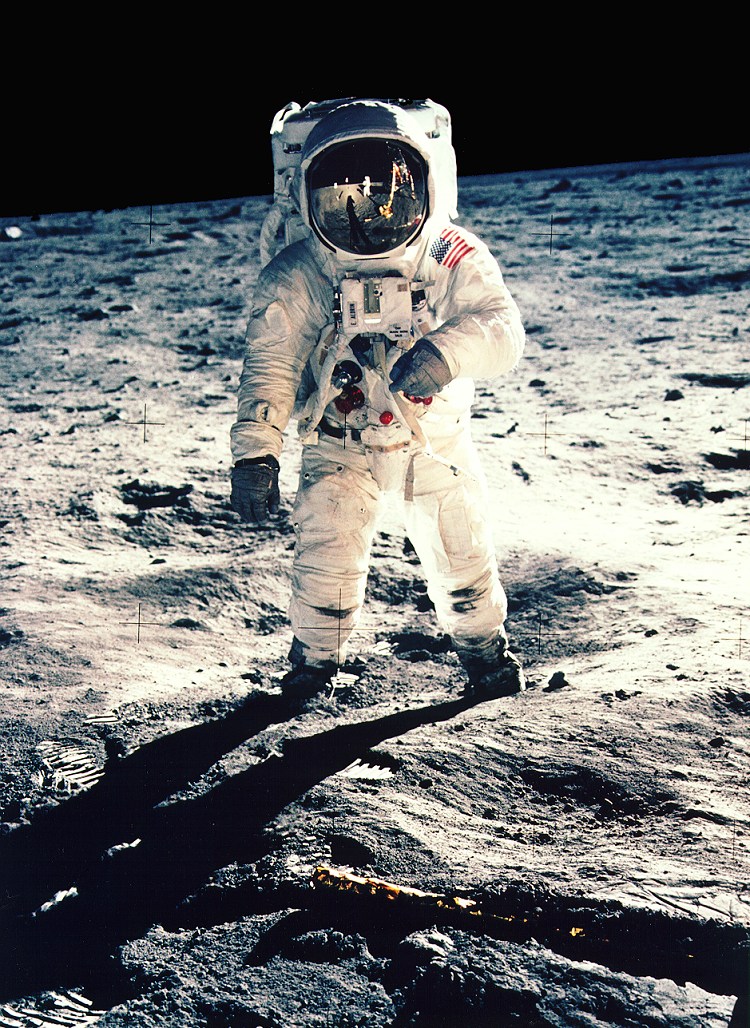Buzz Aldrin asked me to hold out my hand. I did.
He walked across the room with what I saw—for the first time in my life, not just a literary phrase—was classic catlike grace. He looked at my hands and even I could see a slight finger tremble.
“That’s why you’d never make a fighter pilot,” he said. “Everybody who went to the moon had absolutely still hands, perfect coordination, and—” he grinned—“by the way, was an Eagle scout.”
So much for my fighter pilot dreams. We were in his home in Laguna Beach in the 1980s and he wanted to talk about writing a novel with him. I was skeptical (and later the deal didn’t work out). Still I was awed by the guy I’d watched leap joyfully in the moon’s gravity, while Robert Heinlein and Arthur Clarke commented. So I said, “With all that capability, where would you have liked to go next?”
“Mars,” he said. He spoke of the Bonestell covers on Collier’s magazine, accompanying the von Braun articles. The sharp paintings of the Mars fleet—insectoid landers, spherical fuel chambers naked to the view. A utilitarian armada.
“I thought I was going to go to Mars,” he said. “I thought that for years.”
“When did you stop?”
“When I saw the shuttle designs.” He shook his head.
“A space ship designed by a committee,” I said.
“Yeah, a committee of lawyers.”
“If not Mars, how about going back to the moon?”
“I’d like to be buried there.” He smiled but the eyes were distant.
“In a few decades, unless we get our asses back in gear, nobody who walked on the moon will be alive.”
“Being there, that was the peak?”
He chuckled. “No, coming back was. I was pretty damn sure I would go out again. I knew I could do it and wanted to again.”
I couldn’t think of anything to say.
Gregory Benford is an American science fiction author and astrophysicist. He is perhaps best known for his novel Timescape, which won both the Nebula and Campbell awards, and the Galactic Center Saga.










